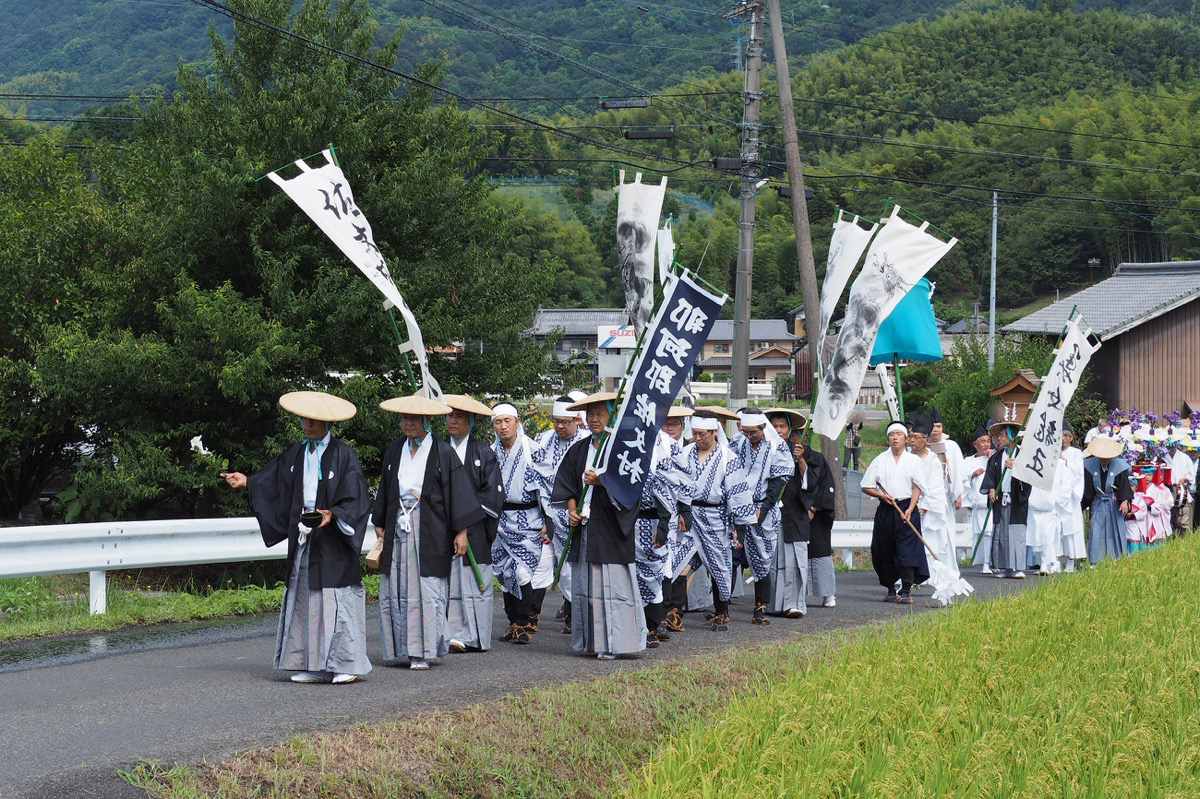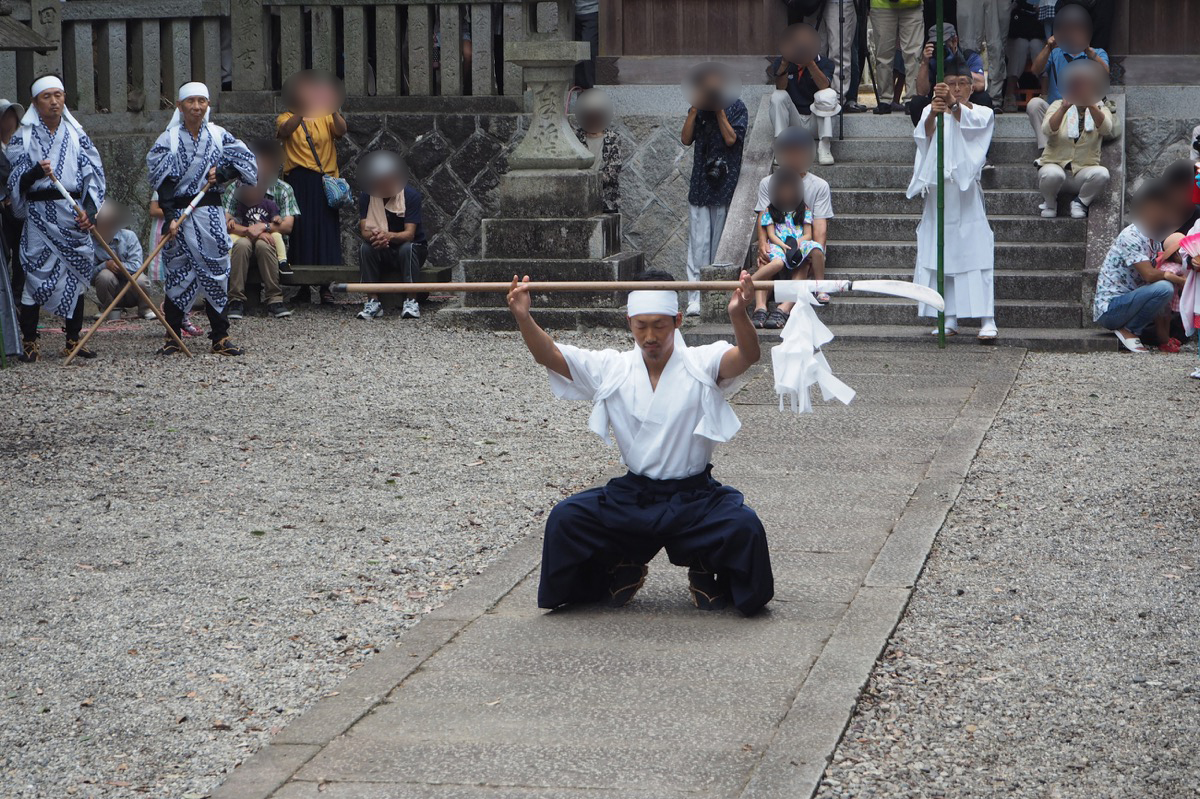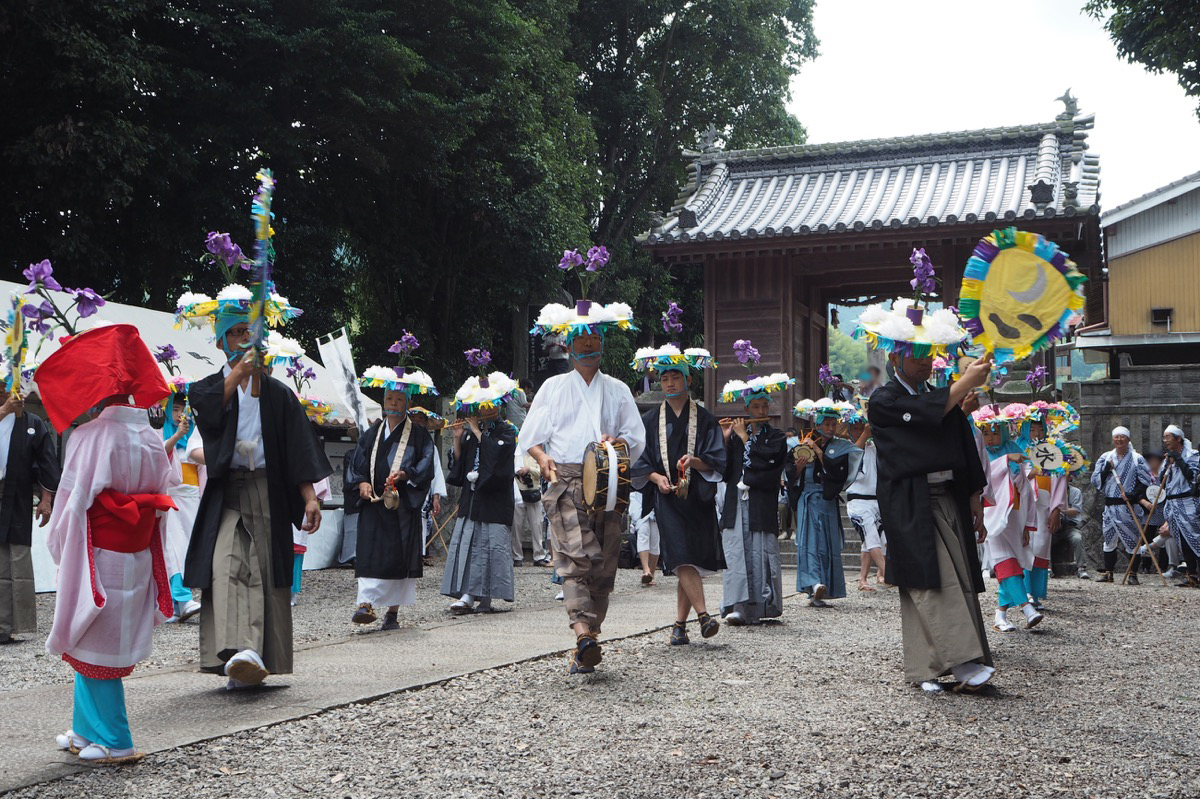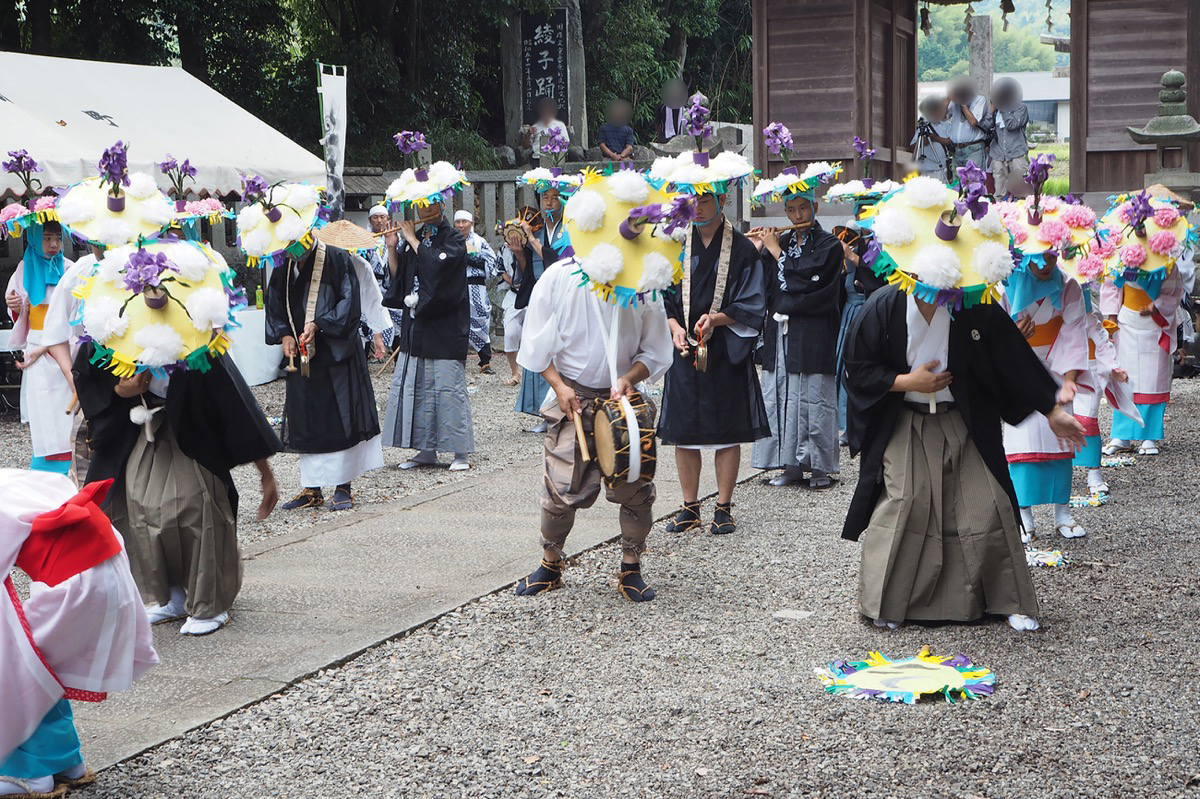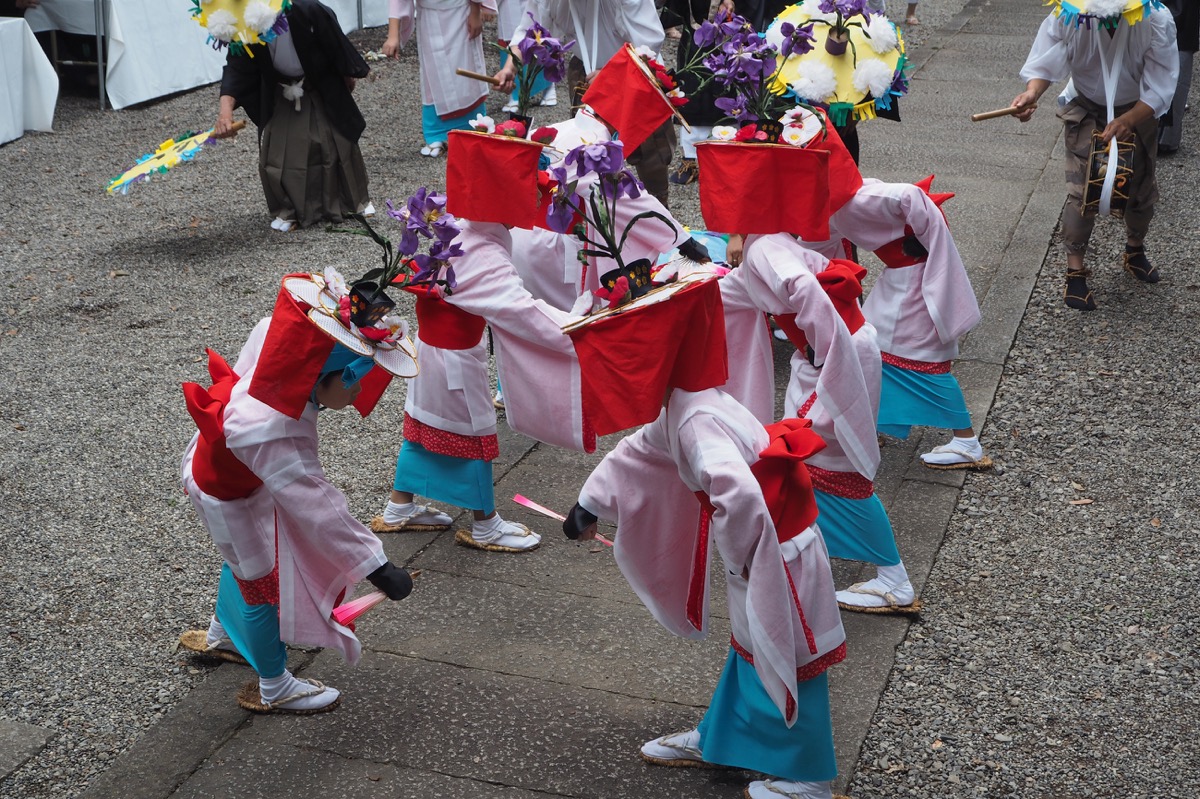Ayako OdoriAyako Odori Dance
| District | Folk Cultural Properties | Period | ー |
|---|---|---|---|
| Set Content/Set Date | Important Intangible Folk Cultural Property・西暦1976.05.04 | ||
| Owner | Association for the Preservation of Ayako Odori Dance in Sabumi | Location | Sabumi, Mannocho, Nakatadogun, Kagawa |
The Ayako Odori is believed to have started when Kobo Daishi (Kukai) visited the village of Sabumi, where he taught a woman named Aya how to dance, and when she did, rain began to fall. The dance is held once every two years at Kamojinja Shrine, with music consisting of 12 songs popular from the late Muromachi Period (1336-1573) to the Edo Period (1603-1867).
Offerings were once dedicated before the Ryuohokora Shrine located at the peak of Mt. Ryuo.
The ceremony starts with "entering the garden, iriha", in which a procession forms and enters shrine precints prior to the dedication. Then, the space is cleansed with a halberd and staff, and finally the genji gives a speech. The speech originally included prayers for rain and appreciation for water, but since there are few water shortages these days, the speeches are now primarily an expression of gratitude toward water. The dance formation consists of singers in front of the main shrine, with child dancers where the boys are dressed as girls in in front of them, then behind them a procession of genji holding large fans, flute and gong players, and taiko drummers lined up behind them, swaying to the rhythm of the song. Despite a lack of flashy dance moves, the dance is characterized by colorful costumes and calm movements, and it maintains some of the characteristics of early Edo Period kabuki song and dance.

